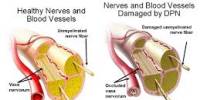With the aim of enhancing diagnosis and therapy, a global team of researchers has created sophisticated computer simulations, or “digital twins,” of diseases. They found the most significant disease protein in hay fever using one of these models.
The study, which was just published in the open access journal Genome Medicine, emphasizes the complexity of disease and the importance of employing the appropriate treatment when necessary.
Why is a drug effective against a certain illness in some individuals, but not in others?
For 40 to 70% of people with common disorders, medicine is ineffective. This is due, in part, to the fact that diseases are rarely brought on by a single, treatable “fault.”
Instead, changing interactions between thousands of genes in numerous cell types cause the symptoms of the majority of disorders. Furthermore, time is crucial. The course of a disease frequently takes years to develop.
Since diagnosis and therapy are frequently delayed as a result of this, we frequently are not aware of illness progression until symptoms manifest, which may lead to inadequate medical efficacy.
In a recent study, an international research team built computational disease models of the changed gene connections across numerous cell types at many time points in an effort to bridge the gap between this intricacy and contemporary health care.
The long-term objective of the researchers is to create “digital twins” of each patient’s condition using such computational models. The right medicament might be administered to each patient at the appropriate moment with the help of such medical digital twins.
Before starting treatment on the patient, each twin should ideally be matched with and treated with thousands of medications in the computer.
The researchers first devised strategies to create digital twins of hay fever sufferers. To identify every gene activity in each of the hundreds of unique immune cells, more especially white blood cells, they employed a technique called single-cell RNA sequencing.
We can see that these are extremely complicated changes that occur in different phases of a disease. The variation between different times points means that you have to treat the patient with the right medicine at the right time.
Dr. Mikael Benson
The researchers evaluated gene activity at several times before and after activating white blood cells with pollen because these relationships between genes and cell types may change over time in the same patient.
The researchers employed network analysis to build computer models of all the data. Complex systems can be described and analyzed using networks. A football team, for instance, may be studied as a network based on the passes made by the players.
The most significant player in such a network may be the one that passes the most to other players over the entire game. Similar methods were used to create the computer models, or “twins,” as well as to determine which disease protein was most crucial.
In the current investigation, the researchers discovered that numerous proteins and signaling cascades played crucial roles in seasonal allergies, and that these varied substantially between cell types and at various phases of the condition.
“We can see that these are extremely complicated changes that occur in different phases of a disease. The variation between different times points means that you have to treat the patient with the right medicine at the right time,” says Dr. Mikael Benson, a professor at Linköping University, who led the study.
Finally, the researchers discovered the critical protein in the twin hay fever model. They demonstrate that in cell-based trials, blocking this protein PDGF-BB was more effective than utilizing a well-known allergy medication that targets a different protein, IL-4.
The study also showed that the techniques might be used to deliver the appropriate care at the appropriate time in treating other immunological disorders, such as rheumatism or inflammatory bowel diseases. International relationships between universities, hospitals, and businesses will be necessary for clinical implementation.
A multidisciplinary team of 15 academics from Sweden, the US, Korea, and China collaborated to create the study. The EU, NIH, Swedish and Nordic Research Councils, and Swedish Cancer Society have all provided financial support for the study.
















